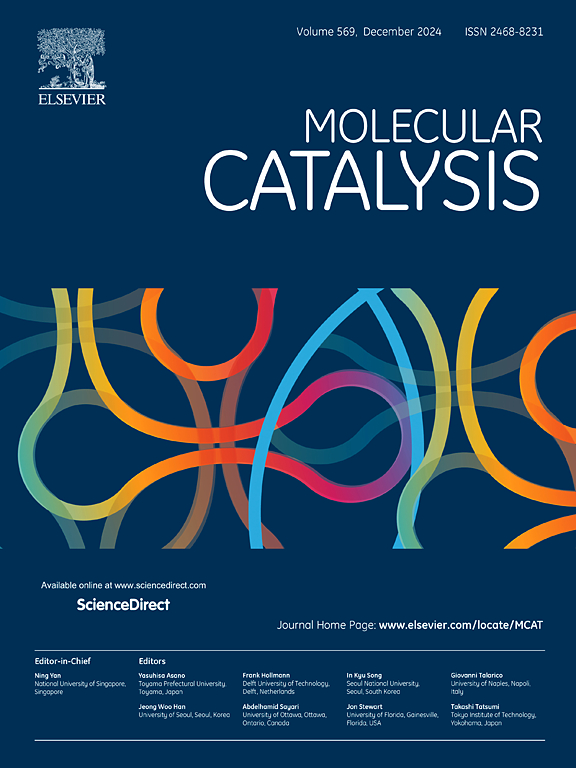Crystal phase tailored TiO2 for photocatalytic ciprofloxacin (CIP) elimination: Performances, degradation pathways, and toxicity assessment
IF 4.9
2区 化学
Q2 CHEMISTRY, PHYSICAL
引用次数: 0
Abstract
Environmental residues of antibiotic molecules adversely affecting human health and ecological safety. TiO2-intervened photocatalytic technology had been praised as a common method for green and efficient degradation of antibiotics. In this work, TiO2 with different ratios of anatase/rutile crystal phases were synthesized by calcining as-prepared H2Ti5O11 at different temperatures. The degradation experiments showed that complete removal of ciprofloxacin (CIP) solution was achieved upon the heterophase TiO2 with anatase/rutile=92:8. The degradation intermediates and possible degradation pathways of ciprofloxacin were determined by high resolution liquid mass spectrometry (HRMS). The toxic effects of CIP on aquatic organisms during the degradation process was predicted by the ECOSAR program. The monitored pea seedlings growth process showed that the degradation of CIP by heterophase TiO2 was a friendly process and had almost no negative impact on the environment. This work provided a reference for the tailoring of crystal phase TiO2 and the toxicity assessment of the degradation process of the ciprofloxacin antibiotic.

光催化去除环丙沙星(CIP)的晶体相定制TiO2:性能、降解途径和毒性评估
抗生素分子的环境残留影响着人类健康和生态安全。二氧化钛介入光催化技术是一种绿色高效降解抗生素的常用方法。本文以制备的H2Ti5O11为原料,在不同温度下煅烧合成了锐钛矿/金红石不同晶相比例的TiO2。降解实验表明,锐钛矿/金红石=92:8的异相TiO2可以完全去除环丙沙星(CIP)溶液。采用高分辨液相质谱法测定环丙沙星的降解中间体和可能的降解途径。ECOSAR计划预测了CIP在降解过程中对水生生物的毒性作用。对豌豆幼苗生长过程的监测表明,异相TiO2降解CIP是一个友好的过程,对环境几乎没有负面影响。本研究为TiO2晶体相的定制和环丙沙星抗生素降解过程的毒性评价提供了参考。
本文章由计算机程序翻译,如有差异,请以英文原文为准。
求助全文
约1分钟内获得全文
求助全文
来源期刊

Molecular Catalysis
Chemical Engineering-Process Chemistry and Technology
CiteScore
6.90
自引率
10.90%
发文量
700
审稿时长
40 days
期刊介绍:
Molecular Catalysis publishes full papers that are original, rigorous, and scholarly contributions examining the molecular and atomic aspects of catalytic activation and reaction mechanisms. The fields covered are:
Heterogeneous catalysis including immobilized molecular catalysts
Homogeneous catalysis including organocatalysis, organometallic catalysis and biocatalysis
Photo- and electrochemistry
Theoretical aspects of catalysis analyzed by computational methods
 求助内容:
求助内容: 应助结果提醒方式:
应助结果提醒方式:


